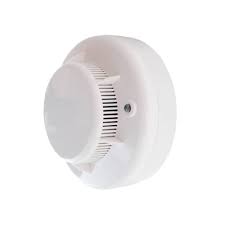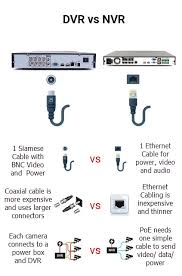Smoke Detection Sensor: Enhancing Safety and Security
In today’s world, safety and security are paramount concerns for individuals and organizations alike. One crucial technology that plays a vital role in ensuring the safety of occupants in buildings is the smoke detection sensor. These sensors are designed to detect the presence of smoke particles in the air, signaling the potential presence of a fire and allowing for timely response and evacuation.
Smoke detection sensors come in various types, including ionization smoke detectors, photoelectric smoke detectors, and dual-sensor smoke detectors. Each type has its own unique way of detecting smoke particles and triggering an alarm to alert occupants of a possible fire hazard.
Ionization smoke detectors work by ionizing air within a chamber. When smoke particles enter the chamber, they disrupt the ionization process, triggering the alarm. Photoelectric smoke detectors, on the other hand, use light beams to detect smoke particles. When smoke enters the chamber, it scatters the light beam, causing the sensor to activate the alarm.
Dual-sensor smoke detectors combine both ionization and photoelectric technologies for enhanced accuracy in detecting different types of fires. By using a combination of these two detection methods, dual-sensor detectors provide a more comprehensive approach to fire detection.
The importance of having reliable smoke detection sensors cannot be overstated. In case of a fire outbreak, early detection is critical for ensuring swift evacuation and minimizing property damage or loss of life. Smoke detection sensors not only provide an early warning system but also help trigger automatic responses such as activating sprinkler systems or alerting emergency services.
Whether installed in residential homes, commercial buildings, or industrial facilities, smoke detection sensors are essential components of any fire safety system. Regular maintenance and testing of these sensors are crucial to ensure their proper functioning when needed most.
In conclusion, smoke detection sensors play a crucial role in enhancing safety and security by providing early warning of potential fire hazards. Investing in high-quality smoke detection technology can make a significant difference in protecting lives and property during emergencies.
Understanding Smoke Detection Sensors: A Comprehensive Guide to Functionality, Types, Installation, and Maintenance
- What is a smoke detection sensor?
- How does a smoke detection sensor work?
- What are the different types of smoke detection sensors?
- Where should smoke detection sensors be installed?
- Are smoke detection sensors effective in preventing fires?
- How often should smoke detection sensors be tested and maintained?
- Can smoke detection sensors detect other hazards besides fire?
- Do smoke detection sensors require professional installation?
- Are there any regulations or standards for installing smoke detection sensors?
What is a smoke detection sensor?
A smoke detection sensor is a specialized device designed to detect the presence of smoke particles in the air. It serves as a crucial component of fire safety systems by providing early warning of potential fire hazards. Smoke detection sensors come in various types, such as ionization, photoelectric, and dual-sensor detectors, each with its own method of detecting smoke particles. These sensors trigger an alarm when smoke is detected, prompting prompt evacuation and necessary actions to mitigate the risk of fire damage and ensure the safety of occupants. Investing in reliable smoke detection sensors is essential for enhancing safety and security in residential, commercial, and industrial settings.
How does a smoke detection sensor work?
A smoke detection sensor works by continuously monitoring the air for the presence of smoke particles. There are different types of smoke detection sensors, including ionization, photoelectric, and dual-sensor detectors. Ionization sensors use ionized air to detect smoke particles that disrupt the ionization process, triggering an alarm. Photoelectric sensors use light beams to detect smoke particles that scatter the light beam, activating the alarm. Dual-sensor detectors combine both technologies for more accurate and comprehensive fire detection. When smoke is detected by the sensor, it triggers an alarm to alert occupants of a potential fire hazard, allowing for timely response and evacuation to ensure safety and security.
What are the different types of smoke detection sensors?
When it comes to smoke detection sensors, there are several different types available to cater to varying needs and environments. The main types of smoke detection sensors include ionization smoke detectors, photoelectric smoke detectors, and dual-sensor smoke detectors. Ionization smoke detectors work by ionizing air within a chamber to detect smoke particles, while photoelectric smoke detectors use light beams to identify the presence of smoke. Dual-sensor smoke detectors combine both ionization and photoelectric technologies for a more comprehensive approach to detecting different types of fires. Each type of sensor has its own unique strengths and applications, making it crucial to choose the right one based on the specific requirements of the setting in which it will be installed.
Where should smoke detection sensors be installed?
Smoke detection sensors should be strategically installed in key locations throughout a building to ensure comprehensive coverage and early detection of potential fire hazards. It is recommended to place smoke detectors in every bedroom, outside each sleeping area, and on every level of the home, including the basement. Additionally, smoke detectors should be installed in living rooms, hallways, and near staircases to maximize coverage. In commercial buildings, smoke detection sensors should be placed in areas with a higher risk of fire hazards, such as kitchens, electrical rooms, storage areas, and near heating systems. Proper placement of smoke detectors is essential for timely detection of smoke particles and ensuring the safety of occupants by providing early warning in case of a fire emergency.
Are smoke detection sensors effective in preventing fires?
Smoke detection sensors are crucial components in fire safety systems, but it is important to understand that their primary function is to detect the presence of smoke and alert occupants to a potential fire hazard. While smoke detection sensors play a vital role in early warning and prompt evacuation, they are not designed to prevent fires from occurring. Instead, they act as proactive measures to mitigate the impact of fires by providing early detection, allowing for timely response, and minimizing property damage or loss of life. Therefore, while smoke detection sensors are highly effective in enhancing safety and security, they should be viewed as part of a comprehensive fire safety strategy that includes preventive measures such as proper maintenance of electrical systems, adherence to fire safety protocols, and regular fire drills.
How often should smoke detection sensors be tested and maintained?
Testing and maintaining smoke detection sensors is crucial to ensure their reliable operation in case of a fire emergency. It is recommended to test smoke detection sensors at least once a month to verify that they are functioning correctly. This can be done by pressing the test button on the sensor to activate the alarm and ensure that it is loud and clear. In addition to regular testing, smoke detection sensors should undergo thorough maintenance at least once a year by a qualified technician. This maintenance may include cleaning the sensor, checking for any signs of wear or damage, and replacing batteries if necessary. By adhering to a regular testing and maintenance schedule, property owners can rest assured that their smoke detection sensors are ready to provide early warning in the event of a fire.
Can smoke detection sensors detect other hazards besides fire?
Smoke detection sensors are specifically designed to detect the presence of smoke particles in the air, signaling the potential occurrence of a fire. While these sensors are highly effective in detecting fire hazards, they are not typically designed to detect other types of hazards such as gas leaks or carbon monoxide. It is important to note that there are specialized sensors available for detecting specific hazards like gas leaks or carbon monoxide, each tailored to respond to the unique characteristics of those hazards. Therefore, while smoke detection sensors serve a critical role in fire safety, it is essential to use appropriate sensors for detecting other types of hazards to ensure comprehensive safety measures are in place.
Do smoke detection sensors require professional installation?
Smoke detection sensors typically do not require professional installation, as many models are designed for easy DIY setup. Most smoke detectors come with simple instructions for mounting on walls or ceilings and require minimal tools for installation. However, it is important to follow the manufacturer’s guidelines and ensure proper placement of the sensor for optimal performance. In some cases, professional installation may be recommended for hard-to-reach areas or interconnected systems that require specialized wiring. Regular testing and maintenance of smoke detection sensors are essential to ensure they function effectively in detecting smoke and providing early warning in case of a fire emergency.
Are there any regulations or standards for installing smoke detection sensors?
Yes, there are regulations and standards in place for installing smoke detection sensors to ensure the safety and effectiveness of these devices. In many countries, building codes and fire safety regulations mandate the installation of smoke detection sensors in residential, commercial, and industrial buildings. These regulations specify the type of sensors to be used, their placement within the building, maintenance requirements, and testing procedures. Additionally, there are industry standards such as those set by organizations like the National Fire Protection Association (NFPA) and the International Electrotechnical Commission (IEC) that provide guidelines for proper installation and operation of smoke detection sensors to meet safety standards.



